Horse Chestnut / All year round / Toxic
The ‘nuts’ or ‘conkers’ of Horse Chestnut are a common and familiar sight in autumn, the tree was introduced to the UK from Turkey in the 16th century.
Common Names
Horse Chestnut, Conker tree, Buckeye.
Botanical Name
Aesculus hippocastanum
Scientific Classification
Kingdom – Plantae
Order – Sapindales
Family – Sapindaceae
Physical Characteristics for Horse Chestnut
Leaves
The leaves are palmate and have 5-7 pointed, crinkled leaflets. Each leaflet can be up to 30cm long. When the leaves fall they leave a distinctive horseshoe shaped scar on the branch.
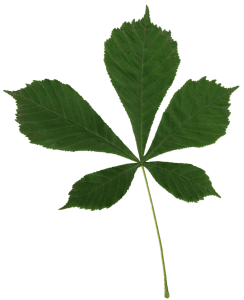
Bark
The bark is thin when the tree is young, but it gradually grows thicker with age. As the tree matures the bark thickens into grey-brown flaky scales.
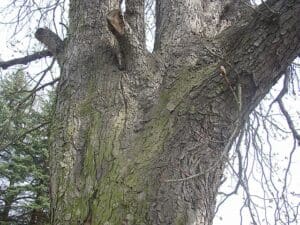
Flowers
The flowers are white to yellow with a pink hue towards the base and they have 5 petals. They grow as an erect panicle that resembles a candle. Up to 50 flowers can grow on each panicle.
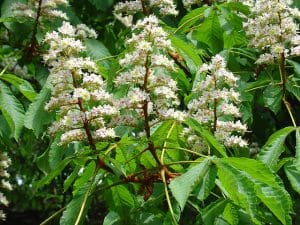
Fruits
Only around 5 fruits develop on each panicle, when young the round, spiky cases are green but darken with age. Inside the cases are up to 3 of the ‘conkers’ which are a deep, rich brown with a whitish scar at the base. Up to 4cm across.
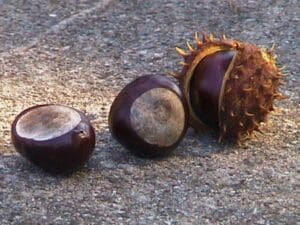
Habitat
Mostly found planted in parks, roadsides and gardens.
Known Hazards
The seed contain significant amounts of a poison called esculin which can be deadly if consumed raw.
Could be Confused with
It’s quite a distinctive tree and is well known by most people but don’t confuse it with Sweet Chestnut (Castanea sativa) Sweet Chestnut has sharper spines on the cases, all densely clustered like spines on a hedgehog, while the spikes on a conker case are more spaced out. Also the ‘nuts’ of Sweet Chestnut have a tassel or point, while conkers are rounded.
Notes on Herbal Uses
The seeds contains a substance that thins the blood. It makes it harder for fluid to leak out of veins and capillaries, which can help prevent water retention. Extracts are also used to treat bruises and strains.
Extra notes from the Foragers
Apparently the Victorians made flour from conkers, they would shell and ground them before leeching out the tannins. It’s quite a laborious process and the resulting flour is still mildly poisonous.
Although we wouldn’t recommend them for the kitchen they can be used as an eco-soap. The nuts are extremely high in saponins and when crushed and soaked in boiling water produce a soap like product that you can used as a replacement for laundry detergent.
Click here to read how to make Horse Chestnut soap.



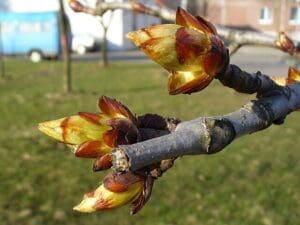
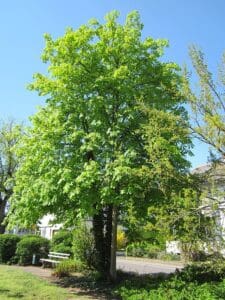
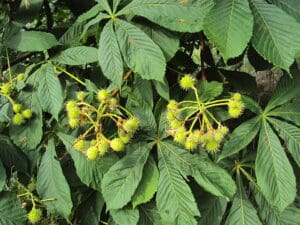



Leave a Reply
You must be logged in to post a comment.